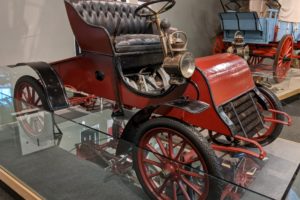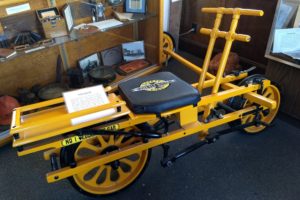Since our days are free with our family at work and at school, we get to figure out how to spend our time and learn more about the area. The campground we stay in while visiting our Florida family is along the waterway that connects the Atlantic Intracoastal Waterway to the Gulf Intracoastal Waterway, flowing through Okeechobee Lake in the southern part of the state and navigating through 5 locks. We are staying just before the St. Lucie Lock in Stuart, Florida.

We decided to explore more about this lock for this post.



The original St. Lucie Lock was built in the 1920s by the Everglades Drainage District and then rebuilt by the Corps in 1941. In 1944, the connecting spillway was constructed here to manage the water level in Lake Okeechobee.
1915 – Everglades Drainage District plan

In the 1920s, the commission decided that 2 locks were necessary so another one was started in 1921 on Lock No. 1 at Lake Okeechobee and in 1922 on Lock No. 2 in the previous picture, which later became known as St. Lucie Lock.
The Army Corps of Engineers first became involved in Florida after two devastating hurricanes in 1926 and 1928. The flooding from these storms destroyed surrounding communities and farmland, claiming more than 3200 lives. The 1928 hurricane was the first recorded Category 5 hurricane in the North Atlantic (per Wikipedia).
The Corps was authorized to build floodway channels, control gates, and major levees along the lake’s shores.
Along with flood risk management, a long term plan called for water conservation, prevention of saltwater intrusion, and keeping saltwater out of the area and preserving fish and wildlife populations. The project included the Okeechobee Waterway, which officially opened on March 23, 1937.

While the lock is made of concrete and steel, the spillway is a 170-foot wide concrete structure with 7 electrically-operated 12-foot wide and 10-foot high steel gates.
Out of all the locks on the waterway, this lock has the greatest elevation difference with an average lock lift of 14 feet.
1928 pictures



In this previous 1928 photo, the lock gates were opened and closed manually. While the original lock has been filled in, the walls are still visible today just north of the present day lock.
1939 pictures

right: A view of the engineer department’s field office.

right: Progress of Lock chamber wall looking north.
1940 pictures

right: General view of progress of lower gate in foreground looking west.
U.S. Army Corps of Engineers

After 9/11, the Corps ferried people safely out of Manhattan. Then they helped develop a debris management plan for cleaning up the World Trade Center site. Thank goodness for all they do.
After learning about the building of the St. Lucie Lock, we decided to spend a day in the town of Okeechobee, which is in the southern center of the state at the north part of the lake.





Leave a Reply
Your email is safe with us.